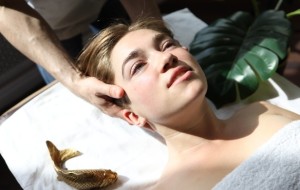A Comprehensive Guide to Wrinkle Reduction Options Available in Lichfield
This article explores the diverse range of wrinkle reduction options available in Lichfield, offering insights into both non-invasive and surgical treatments.
Introduction to Wrinkle Reduction
Understanding Wrinkles
Wrinkles are a natural part of the aging process, often appearing as lines, creases, or folds in the skin. They are most commonly found on areas exposed to the sun, such as the face, neck, hands, and forearms. The development of wrinkles is influenced by a combination of factors, including genetics, environmental exposure, and lifestyle choices. As we age, our skin loses elasticity and moisture, leading to the formation of these lines.
Causes of Wrinkles
Intrinsic Aging
Intrinsic aging refers to the natural aging process that occurs over time, regardless of external factors. This process is largely determined by genetics and results in the gradual breakdown of collagen and elastin fibers in the skin. As these fibers weaken, the skin becomes less firm and more prone to wrinkling.
Extrinsic Aging
Extrinsic aging is influenced by external factors such as sun exposure, pollution, and lifestyle habits. Ultraviolet (UV) radiation from the sun is a major contributor to extrinsic aging, as it accelerates the breakdown of collagen and elastin. Other factors, such as smoking and poor nutrition, can also exacerbate the formation of wrinkles by reducing the skin's ability to repair itself.
Importance of Wrinkle Reduction
Wrinkle reduction is important for many individuals seeking to maintain a youthful appearance and boost their self-confidence. While wrinkles are a natural part of aging, reducing their appearance can help individuals feel more comfortable in their skin. Moreover, wrinkle reduction treatments can improve skin texture and tone, contributing to overall skin health.
Overview of Wrinkle Reduction Options
There are numerous wrinkle reduction options available, ranging from non-invasive treatments to surgical procedures. Non-invasive options include topical treatments, such as retinoids and antioxidants, which can help improve skin texture and reduce the appearance of fine lines. Minimally invasive procedures, such as Botox and dermal fillers, offer temporary solutions by relaxing facial muscles or adding volume to the skin. For more significant results, surgical options like facelifts can provide long-lasting wrinkle reduction by tightening the skin and underlying tissues.
Choosing the Right Option
Selecting the appropriate wrinkle reduction option depends on various factors, including the severity of the wrinkles, the individual's skin type, and personal preferences. Consulting with a qualified dermatologist or cosmetic surgeon can help determine the most suitable treatment plan. It is essential to consider the potential risks and benefits of each option, as well as the expected recovery time and cost.
Overview of Wrinkle Formation
The Structure of the Skin
Epidermis
The outermost layer of the skin, the epidermis, acts as a protective barrier against environmental factors. It is primarily composed of keratinocytes, which are responsible for producing keratin, a protein that strengthens the skin. The epidermis also contains melanocytes, which produce melanin, the pigment that gives skin its color. As we age, the turnover rate of cells in the epidermis slows down, leading to a thinner layer that is more susceptible to damage and wrinkle formation.
Dermis
Beneath the epidermis lies the dermis, a thicker layer that provides structural support to the skin. It contains collagen and elastin fibers, which are crucial for maintaining skin elasticity and firmness. Collagen provides strength, while elastin allows the skin to return to its original shape after stretching or contracting. With age, the production of collagen and elastin decreases, leading to the weakening of the skin's structural integrity and the formation of wrinkles.
Subcutaneous Layer
The subcutaneous layer, or hypodermis, is the deepest layer of the skin, composed mainly of fat and connective tissue. It acts as a cushion, protecting the body from external impacts and helping to maintain body temperature. As we age, the fat in this layer diminishes, leading to a loss of volume and the appearance of deeper wrinkles and sagging skin.
Factors Contributing to Wrinkle Formation
Intrinsic Aging
Intrinsic aging, also known as chronological aging, is the natural aging process that occurs over time. It is influenced by genetic factors and results in the gradual decline of skin function. This process leads to the thinning of the epidermis, reduced collagen and elastin production, and decreased skin cell turnover, all of which contribute to wrinkle formation.
Extrinsic Aging
Extrinsic aging is caused by external factors that accelerate the aging process. The most significant contributor to extrinsic aging is sun exposure, which leads to photoaging. Ultraviolet (UV) radiation from the sun damages collagen fibers and promotes the production of abnormal elastin, resulting in the formation of wrinkles. Other factors include smoking, pollution, poor nutrition, and repetitive facial expressions, all of which can exacerbate the development of wrinkles.
The Role of Genetics
Genetics play a crucial role in determining how and when wrinkles will form. Some individuals may have a genetic predisposition to develop wrinkles earlier or more prominently than others. Genetic factors influence the rate of collagen and elastin production, skin thickness, and the skin's ability to repair itself, all of which affect wrinkle formation.
The Impact of Lifestyle Choices
Lifestyle choices significantly impact the formation and severity of wrinkles. A diet rich in antioxidants, vitamins, and minerals can support skin health and reduce the risk of premature aging. Hydration is also essential, as well-hydrated skin is more resilient and less prone to wrinkle formation. Regular exercise improves circulation, delivering oxygen and nutrients to the skin, which can help maintain its elasticity and firmness. Conversely, smoking and excessive alcohol consumption can accelerate the aging process and contribute to the development of wrinkles.
Non-Invasive Treatments Available in Lichfield
Botox Injections
Botox injections are a popular non-invasive treatment for reducing the appearance of wrinkles and fine lines. In Lichfield, many clinics offer Botox as a quick and effective solution for dynamic wrinkles, which are caused by muscle movements. The procedure involves injecting small amounts of botulinum toxin into specific facial muscles, temporarily paralyzing them and smoothing out the skin. The effects typically last for three to six months, and the treatment requires minimal downtime, allowing patients to resume their daily activities almost immediately.
Dermal Fillers
Dermal fillers are another widely available non-invasive option in Lichfield for wrinkle reduction. These injectable treatments use substances like hyaluronic acid to fill in wrinkles and add volume to areas of the face that have lost elasticity and fullness. Dermal fillers can address static wrinkles, which are visible even when the face is at rest. The results are immediate, and depending on the type of filler used, they can last from six months to over a year. Clinics in Lichfield offer a range of dermal fillers tailored to individual needs and desired outcomes.
Chemical Peels
Chemical peels are a non-invasive treatment option that involves applying a chemical solution to the skin, causing it to exfoliate and eventually peel off. This process reveals a new layer of skin that is smoother and less wrinkled. In Lichfield, various clinics provide chemical peels with different strengths and formulations to target specific skin concerns, including fine lines and wrinkles. The treatment can be customized to suit different skin types and conditions, and it typically requires little to no downtime.
Microdermabrasion
Microdermabrasion is a non-invasive exfoliating treatment available in Lichfield that helps reduce the appearance of fine lines and wrinkles. This procedure uses a special device to gently remove the outermost layer of dead skin cells, promoting the growth of new, healthy skin. Microdermabrasion is suitable for all skin types and can be performed as a standalone treatment or in combination with other anti-aging procedures. It is a quick and painless process with no recovery time, making it a convenient option for those with busy schedules.
Laser Skin Resurfacing
Laser skin resurfacing is a non-invasive treatment offered by several clinics in Lichfield to address wrinkles and other signs of aging. This procedure uses laser technology to remove damaged skin layers and stimulate collagen production, resulting in smoother and firmer skin. There are different types of laser treatments available, including ablative and non-ablative lasers, each with varying levels of intensity and recovery time. Patients can expect noticeable improvements in skin texture and tone, with results that can last for several months to years.
Radiofrequency Treatments
Radiofrequency treatments are a non-invasive option for wrinkle reduction that uses energy waves to heat the deeper layers of the skin, stimulating collagen production and tightening the skin. In Lichfield, clinics offer radiofrequency treatments as a safe and effective way to reduce the appearance of wrinkles and improve skin elasticity. The procedure is painless, requires no downtime, and can be used on various areas of the face and body. Multiple sessions may be needed to achieve optimal results, with effects that can last for several months.
Minimally Invasive Procedures in Lichfield
Overview of Minimally Invasive Procedures
Minimally invasive procedures have gained popularity in recent years due to their effectiveness in reducing wrinkles with minimal downtime and lower risk compared to surgical options. These procedures typically involve injections or the use of advanced technologies to target specific areas of the face, providing a more youthful appearance without the need for extensive recovery periods.
Popular Minimally Invasive Procedures
Botox Injections
Botox is one of the most well-known minimally invasive treatments for wrinkle reduction. It works by temporarily paralyzing the muscles responsible for causing wrinkles, particularly in areas such as the forehead, around the eyes, and between the eyebrows. In Lichfield, many clinics offer Botox treatments administered by qualified professionals, ensuring safe and effective results.
Dermal Fillers
Dermal fillers are another popular option for those seeking to reduce the appearance of wrinkles. These injectable treatments work by adding volume to the skin, smoothing out lines and wrinkles. Common areas treated with dermal fillers include the cheeks, lips, and nasolabial folds. Clinics in Lichfield offer a variety of filler options, including hyaluronic acid-based products, which are known for their natural-looking results.
Microneedling
Microneedling is a minimally invasive procedure that involves the use of tiny needles to create micro-injuries in the skin. This process stimulates the body's natural healing response, promoting collagen production and improving skin texture. In Lichfield, microneedling is available at several aesthetic clinics, often combined with serums or platelet-rich plasma (PRP) for enhanced results.
Laser Treatments
Laser treatments are a versatile option for wrinkle reduction, utilizing focused light energy to target and rejuvenate the skin. Different types of lasers can be used to address various skin concerns, including fine lines and wrinkles. Clinics in Lichfield offer a range of laser treatments, such as fractional laser therapy, which promotes collagen production and skin tightening with minimal downtime.
Choosing the Right Clinic in Lichfield
When considering minimally invasive procedures in Lichfield, it is essential to choose a reputable clinic with experienced practitioners. Look for clinics that offer consultations to discuss your specific needs and goals, and ensure that the practitioners are certified and experienced in the procedures they offer. Reading reviews and seeking recommendations can also help in selecting a clinic that provides high-quality care and satisfactory results.
Cost Considerations
The cost of minimally invasive procedures can vary depending on the type of treatment, the area being treated, and the clinic's pricing structure. In Lichfield, prices for these procedures are generally competitive, but it is important to consider the value of the treatment rather than just the cost. Investing in a reputable clinic with experienced practitioners can ensure better outcomes and reduce the risk of complications.
Surgical Options for Wrinkle Reduction
Facelift (Rhytidectomy)
Overview
A facelift, or rhytidectomy, is a surgical procedure aimed at reducing the appearance of facial wrinkles and other signs of aging. It involves the removal of excess skin, tightening of underlying tissues, and redraping of the skin on the face and neck.
Procedure
The procedure typically involves making incisions along the hairline and around the ears. The surgeon then lifts and tightens the underlying muscles and tissues, removes excess skin, and repositions the remaining skin for a smoother appearance.
Recovery
Recovery from a facelift can take several weeks. Patients may experience swelling, bruising, and discomfort, which can be managed with medication. It's important to follow post-operative care instructions to ensure optimal healing.
Risks
As with any surgery, there are risks involved, including infection, scarring, and anesthesia complications. There is also a risk of nerve injury, which can lead to temporary or permanent facial weakness.
Brow Lift (Forehead Lift)
Overview
A brow lift, also known as a forehead lift, is a surgical procedure designed to reduce wrinkles and lines on the forehead and between the eyes. It also raises sagging brows that can cause hooding of the upper eyelids.
Procedure
The procedure can be performed using different techniques, including the traditional method with an incision across the forehead or an endoscopic approach with smaller incisions. The surgeon adjusts the tissue and muscles to smooth the forehead and elevate the brows.
Recovery
Recovery time varies, but most patients can return to normal activities within two weeks. Swelling and bruising are common, and patients are advised to keep their head elevated and avoid strenuous activities during the initial recovery period.
Risks
Potential risks include scarring, changes in skin sensation, and asymmetry in brow position. As with any surgical procedure, there is also a risk of infection and adverse reactions to anesthesia.
Eyelid Surgery (Blepharoplasty)
Overview
Eyelid surgery, or blepharoplasty, targets wrinkles and sagging skin around the eyes. It can be performed on the upper eyelids, lower eyelids, or both, to improve the appearance of the eyes and reduce signs of aging.
Procedure
The procedure involves making incisions along the natural lines of the eyelids, removing or repositioning excess skin, fat, and muscle, and then closing the incisions with fine sutures.
Recovery
Recovery from eyelid surgery typically takes one to two weeks. Patients may experience swelling, bruising, and temporary vision changes. Cold compresses and prescribed medications can help manage discomfort.
Risks
Risks include infection, scarring, dry eyes, and difficulty closing the eyes. In rare cases, there may be a risk of vision impairment. It's crucial to follow the surgeon's post-operative care instructions to minimize complications.
Neck Lift
Overview
A neck lift is a surgical procedure that addresses sagging skin, excess fat, and muscle banding in the neck area, which can contribute to the appearance of wrinkles and aging.
Procedure
The procedure involves making incisions behind the ears and possibly under the chin. The surgeon removes excess skin and fat, tightens the underlying muscles, and repositions the skin for a smoother, more youthful neck contour.
Recovery
Recovery can take several weeks, with swelling and bruising being common. Patients are advised to keep their head elevated and avoid twisting or bending the neck during the initial recovery phase.
Risks
Potential risks include scarring, changes in skin sensation, and asymmetry. As with other surgical procedures, there is a risk of infection and complications related to anesthesia.
Skincare Products and Topical Treatments
Over-the-Counter (OTC) Products
Retinoids
Retinoids, derivatives of Vitamin A, are widely recognized for their efficacy in reducing wrinkles and fine lines. They work by promoting cell turnover and stimulating collagen production, which helps to improve skin texture and tone. Common OTC retinoids include retinol and retinaldehyde, which are less potent than prescription options but still effective for many users.
Antioxidants
Antioxidants such as Vitamin C, Vitamin E, and ferulic acid are crucial in protecting the skin from oxidative stress caused by free radicals. These ingredients help to brighten the skin, improve elasticity, and reduce the appearance of wrinkles. Products containing these antioxidants can be found in serums, creams, and lotions.
Peptides
Peptides are short chains of amino acids that serve as building blocks for proteins like collagen and elastin. Topical peptide treatments can help to stimulate collagen production, leading to firmer and smoother skin. They are often included in anti-aging creams and serums.
Hyaluronic Acid
Hyaluronic acid is a powerful humectant that attracts and retains moisture in the skin. It helps to plump the skin, reducing the appearance of fine lines and wrinkles. Hyaluronic acid is commonly found in serums and moisturizers, providing hydration and a youthful glow.
Prescription Treatments
Tretinoin
Tretinoin, a prescription-strength retinoid, is highly effective in treating wrinkles and other signs of aging. It accelerates cell turnover and boosts collagen production, leading to smoother and more youthful-looking skin. Tretinoin is available in various formulations and strengths, and its use should be monitored by a healthcare professional due to potential side effects like irritation and dryness.
Hydroquinone
Hydroquinone is a prescription topical treatment used to lighten hyperpigmentation and age spots, which can contribute to an aged appearance. By inhibiting melanin production, hydroquinone helps to even out skin tone and improve overall skin clarity. It is often used in combination with other anti-aging treatments for optimal results.
Natural and Organic Options
Plant-Based Oils
Plant-based oils such as rosehip, argan, and jojoba oil are rich in essential fatty acids and antioxidants. These oils can help to nourish the skin, improve elasticity, and reduce the appearance of fine lines. They are often used in natural skincare formulations for their moisturizing and anti-aging properties.
Herbal Extracts
Herbal extracts like green tea, chamomile, and aloe vera are known for their soothing and anti-inflammatory effects. These ingredients can help to calm irritated skin and provide antioxidant protection, making them valuable additions to anti-aging skincare routines.
Considerations for Choosing Skincare Products
Skin Type
When selecting skincare products, it is important to consider your skin type. Those with oily skin may prefer lightweight, non-comedogenic formulations, while individuals with dry skin might benefit from richer, more hydrating products. Understanding your skin type can help you choose the most effective treatments for wrinkle reduction.
Sensitivity and Allergies
Some active ingredients, particularly retinoids and certain acids, can cause irritation or allergic reactions in sensitive skin. It is advisable to perform a patch test before using a new product and to consult with a dermatologist if you have concerns about potential reactions.
Consistency and Patience
Achieving noticeable results with skincare products and topical treatments requires consistency and patience. It may take several weeks or even months of regular use to see significant improvements in the appearance of wrinkles. Following a consistent skincare routine and being patient with the process is key to achieving desired outcomes.
Lifestyle Changes and Home Remedies
Healthy Diet and Hydration
A balanced diet rich in antioxidants, vitamins, and minerals can significantly impact skin health. Consuming plenty of fruits and vegetables, such as berries, leafy greens, and citrus fruits, provides essential nutrients that help combat oxidative stress and promote collagen production. Omega-3 fatty acids found in fish like salmon and flaxseeds can also support skin elasticity and hydration. Staying well-hydrated by drinking adequate water throughout the day helps maintain skin moisture and suppleness, reducing the appearance of wrinkles.
Regular Exercise
Engaging in regular physical activity boosts circulation, which helps deliver oxygen and nutrients to the skin. This increased blood flow can promote a healthy, glowing complexion and support the skin's natural repair processes. Exercise also helps reduce stress, which can contribute to premature aging and the formation of wrinkles.
Adequate Sleep
Quality sleep is crucial for skin regeneration and repair. During deep sleep, the body produces growth hormones that aid in cell turnover and collagen production. Aim for 7-9 hours of restful sleep each night to allow your skin to recover and rejuvenate, minimizing the appearance of fine lines and wrinkles.
Sun Protection
Protecting your skin from harmful UV rays is essential in preventing premature aging. Use a broad-spectrum sunscreen with at least SPF 30 daily, even on cloudy days, to shield your skin from sun damage. Wearing protective clothing, such as hats and sunglasses, and seeking shade during peak sun hours can further reduce your risk of developing wrinkles.
Stress Management
Chronic stress can accelerate the aging process by increasing the production of cortisol, a hormone that breaks down collagen. Incorporating stress-reducing practices such as yoga, meditation, or deep breathing exercises into your daily routine can help manage stress levels and promote healthier skin.
Skincare Routine
Establishing a consistent skincare routine tailored to your skin type can help maintain its youthful appearance. Cleansing, exfoliating, and moisturizing regularly can remove dead skin cells, promote cell turnover, and keep the skin hydrated. Look for products containing ingredients like retinoids, hyaluronic acid, and peptides, which are known for their anti-aging properties.
Natural Remedies
Several natural remedies can be incorporated into your skincare regimen to help reduce wrinkles. Applying aloe vera gel can soothe and hydrate the skin, while coconut oil can provide deep moisture and improve skin elasticity. Honey, with its antioxidant and humectant properties, can be used as a face mask to nourish and rejuvenate the skin. Regularly massaging the face with essential oils like rosehip or argan oil can also promote circulation and enhance skin texture.
Choosing the Right Option for You in Lichfield
Understanding Your Skin Type and Needs
Before selecting a wrinkle reduction option, it's crucial to understand your skin type and specific needs. Different treatments work better for different skin types, and knowing whether your skin is oily, dry, sensitive, or a combination can help narrow down the choices. Consider consulting with a dermatologist in Lichfield to assess your skin's condition and discuss your goals.
Exploring Available Treatments
Non-Invasive Options
In Lichfield, non-invasive treatments such as topical creams, serums, and chemical peels are popular for those seeking minimal downtime. These options are generally suitable for individuals with mild to moderate wrinkles and can be a good starting point for those new to wrinkle reduction.
Minimally Invasive Procedures
For more pronounced wrinkles, minimally invasive procedures like Botox and dermal fillers are available. These treatments are performed by qualified practitioners in Lichfield and offer quick results with relatively short recovery times. It's important to research and choose a reputable clinic to ensure safety and effectiveness.
Surgical Solutions
For those considering more permanent solutions, surgical options such as facelifts are available in Lichfield. These procedures are more invasive and require a longer recovery period but can provide significant and lasting results. Consulting with a board-certified plastic surgeon is essential to understand the risks and benefits.
Evaluating Cost and Budget
The cost of wrinkle reduction treatments can vary widely depending on the type of procedure and the clinic you choose. It's important to set a budget and explore different options within that range. Some clinics in Lichfield may offer payment plans or financing options, making it easier to manage the cost of more expensive treatments.
Considering Lifestyle and Downtime
When choosing a wrinkle reduction option, consider your lifestyle and the amount of downtime you can accommodate. Non-invasive treatments typically require little to no recovery time, while surgical procedures may necessitate taking time off work and limiting activities. Assess your schedule and commitments to determine which option aligns best with your lifestyle.
Seeking Professional Advice
Consulting with a qualified professional in Lichfield is a crucial step in choosing the right wrinkle reduction option. A dermatologist or cosmetic surgeon can provide personalized recommendations based on your skin type, concerns, and goals. They can also discuss potential side effects and help you set realistic expectations for the results.
Reading Reviews and Testimonials
Researching reviews and testimonials from other patients in Lichfield can provide valuable insights into the effectiveness and satisfaction of different treatments. Look for feedback on local clinics and practitioners to gauge the quality of service and results you can expect. This information can help you make an informed decision and choose a provider with a proven track record.











Comments
0 comment